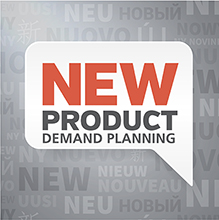
There is an old saying; “You don’t know what you have until it’s gone.” However, if you never understood what you had in the first place, you will not even know that much. Many companies today continue on, quarter after quarter, making decisions without fully realizing the opportunities they have missed and the consequences they have endured as a result of this lack of visibility. Planning New Product Demand is not easy; indeed, it is as much an art as it is a skill. But in today’s business world, awash in laptops, fancy spreadsheets, and impressive enterprise grade business management tools, the art of new product planning gets lost. As a result, we often find ourselves in painful short-term, gap-closing meetings and cost reduction initiatives, having never recognized the long-term effects of innovation and its potential positive impact, which is both more effective and rewarding to manage. While the art of new product demand planning is challenging, it is by no means impossible. It is important that we explore some simple ways we can correct this vital business management behavior.
Four Key Questions To Ask Yourself Regarding New Product Demand Planning
1) What is the difference between a Demand Plan and a Forecast?
Before moving into the implementation stage of New Product Demand Planning, it is crucial to understand the difference between a Demand Plan and a Forecast. As you can imagine, a forecast is commonly associated with a prediction of the future of which we have no control. We forecast the weather but have no way of impacting whether it will rain or be sunny next week. All we can do is predict and react.
Conversely, a plan is a course of action we implement that does allow us to influence our future. Businesses should be operating to a plan rather than a forecast and, therefore, the result of understanding and predicting those influences is a Demand Plan. This is why Oliver Wight principals teach the foundational concept of demand planning as a tool for valid New Product Portfolio and Project Management.
2) What is New Product Demand?
In order to have an effective demand planning process, new products must be included in the process. In order to do this, new products must be clearly defined. This definition tends to vary by company and industry but must also include the length of time products continue to be classified as “new” after launch.
When developing this definition, one critical question to ask is; “Does development of the product utilize R&D or project management resources?” If the answer is yes, this is an indicator that the product should fall within the definition of “new”.
3) What are the Consequences and Opportunities to New Product Development Decisions?
New product development decisions can be either enlightening or crippling to a company’s long-term outlook if not recorded properly. If new products don’t always make it through the development phase, this must be accurately reflected in the Demand Plan along with the assumption that some new products will.
When new product plans are set in motion, company resources are allocated to launching this new product. However, when a decision is made to kill a project or new product under development, the short-term impact may be positive. as cost and required resources are reduced resulting in instant benefit to cost and margins. But these decisions also have a long-term impact. as products and their planned revenue are removed from the portfolio. If we do not link consequences of such decisions to the long-term impact, we are cheating the business out of the visibility management needs to make good decisions. This is why the concept of tying the Demand Plan and New Product Portfolio and Project Management together is so important. Your key decision makers will have the ability to meticulously manage the present and the future, reflecting changes throughout the planning and reporting process.
4) What are some of the Challenges When Estimating New Product Demand?
Yes, we have all heard the age-old question; “How do we know what will happen in the future?” Will our product sell, how great will the demand be, will the product even make it to launch? These questions are challenging to answer because we simply do not know. However, having a plan in place gives us guidelines to follow, so that when our numbers are off (as they almost always are), we can make adjustments to plan for the future.
Some common errors or lapses in timing can also be accounted for in the Demand Plan to provide flexibility. This way, if a product launch is delayed or is ahead of schedule, it will be reflected in the Demand Plan. With changes being recorded in the Demand Plan, there will be clarity in the New Product Portfolio and Project Management processes.
The absence of this vital business management behavior leaves us with few choices to close performance gaps. Indeed, the reality of publicly traded companies and the pressures those companies face each quarter make it difficult to focus on the long term. The simple answer to this dilemma is to do both, but the behavior requires both leadership and discipline.
Oliver Wight can help you get the most out of your Integrated Business Planning process by ensuring that the Project Management Review and Demand Plan are aligned. Click on the link below, and sign up to read the full, in-depth version of our Integrated Product Portfolio and Project Management white paper on “The Art of New Product Demand Planning.” Or watch the pre-recorded webinar


